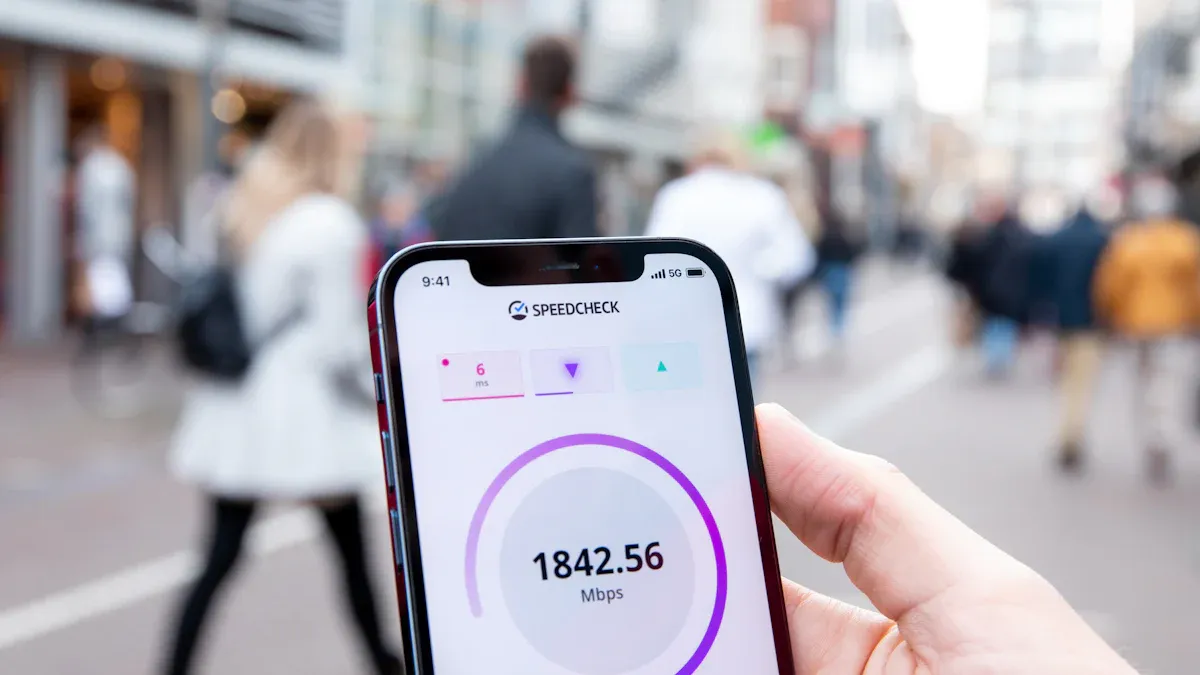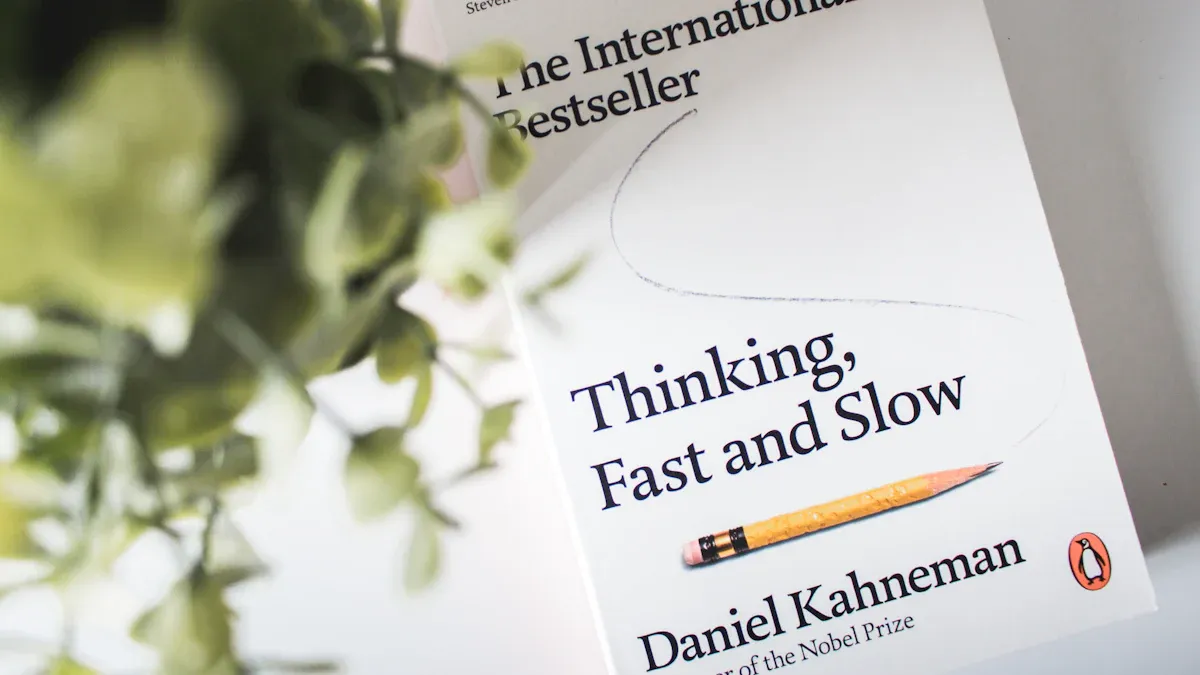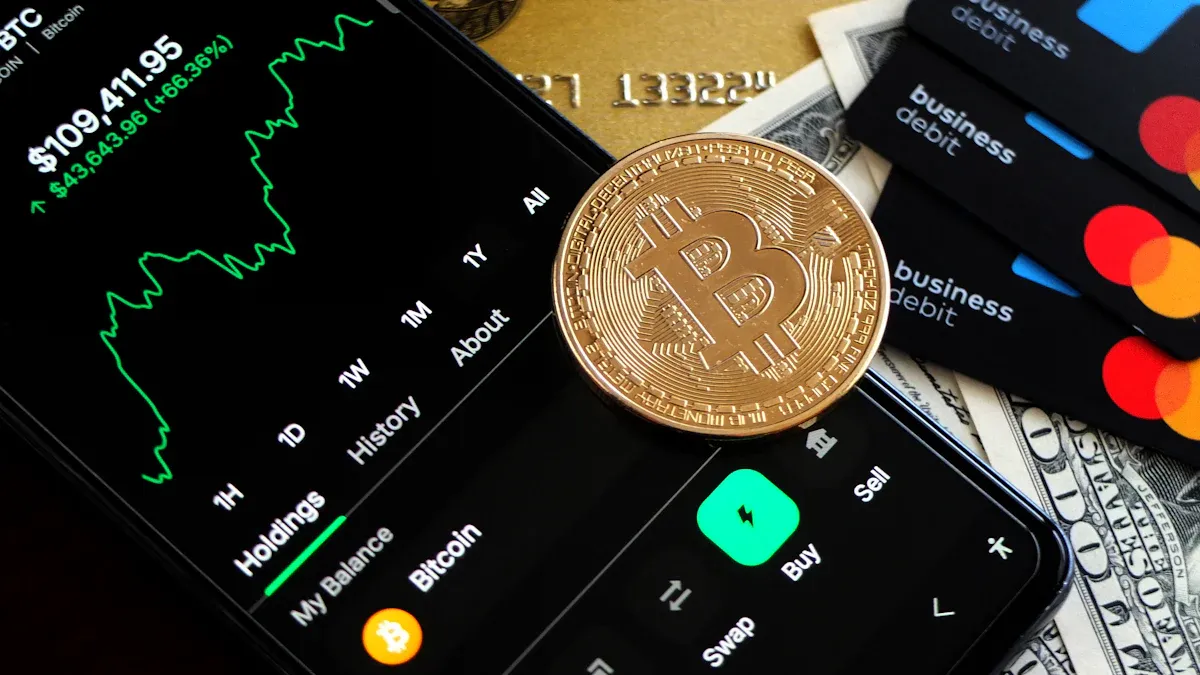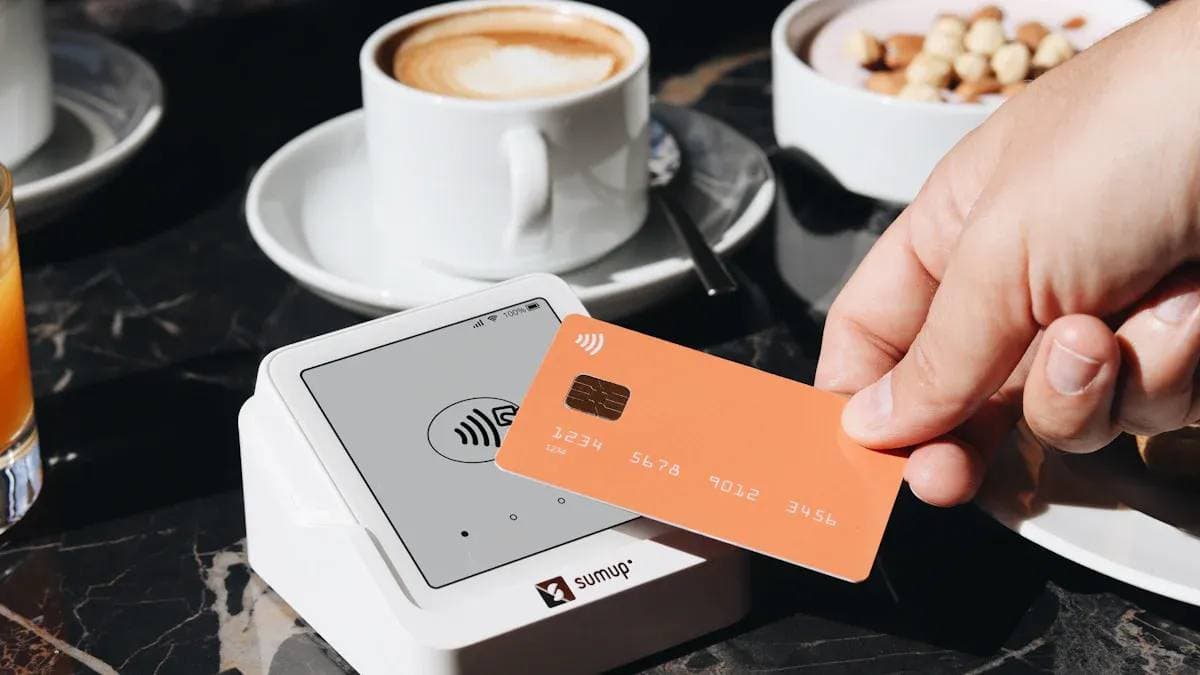- EasyCard
- Trade
- Help
- Announcement
- Academy
- SWIFT Code
- Iban Number
- Referral
- Customer Service
- Blog
- Creator
From Seconds to Days: A Guide to Understanding Settlement Time Differences Across Payment Methods

Image Source: unsplash
Have you ever wondered: after transferring money, when exactly will it arrive? From seconds-level arrival to multi-day waits, the settlement time differences between payment methods are vast. This is primarily due to three factors: the design of the payment system, the type of transaction network, and the processing rules of each platform. Understanding these allows you to better assess payment platform settlement times.
💡 Did you know? More than 70 countries worldwide have now adopted real-time payment systems, and instant settlement is gradually becoming the new standard in many transaction scenarios.
Key Takeaways
- Payment speeds vary from seconds to days. This depends on the payment system, network, and platform rules.
- Payment methods are divided into four speed tiers. They are seconds-level, hours-level, 1-3 days, and over 3 days.
- When choosing a payment method, you need to consider speed, cost, and security. There is no best method, only the one that best fits your needs.
- Personal transfers and business payments have different options. Choose fast for urgent needs, and cost-effective for non-urgent ones.
- Cross-border payments are more complex. You need to balance speed, cost, and withdrawal convenience.
Payment Settlement Time Tiers Explained: From Seconds to Multiple Days

Image Source: unsplash
To help you more intuitively understand the time funds spend in transit, we have categorized common payment methods into four settlement time tiers. From the instantly responsive “Flash” to the patience-requiring “Marathon Runner,” you will discover that each method has its specific application scenarios and technical background.
Tier 1: Seconds/Minutes-Level Arrival
Payment methods in this tier make waiting nearly imperceptible. After you click send, the recipient receives the funds almost simultaneously. This is mainly due to real-time payment systems that operate 24/7.
- Personal Instant Transfers (Alipay/WeChat Pay): When you transfer money to a friend via Alipay, the funds typically arrive in the recipient’s account within minutes. WeChat Pay is similarly fast, but note that the recipient must confirm receipt within 24 hours, or the funds will automatically be returned.
- Real-Time Payment Network (RTP): This is an advanced interbank payment system. When you initiate a transfer through a bank that supports RTP, the entire process is instant and processed transaction-by-transaction.
- Initiate Payment: You enter the recipient’s information and amount in the banking app.
- Bank Verification: Your bank immediately confirms whether there are sufficient funds in the account.
- Network Processing: The payment instruction is sent directly to the recipient’s bank via the RTP network.
- Instant Confirmation: Upon transaction completion, both you and the recipient receive immediate notifications.
- Inter-User Transfers on Modern Payment Platforms: Platforms like Biyapay also complete transfers between users in real time. Funds circulate between internal platform accounts without involving external bank clearing, enabling 7x24-hour seconds-level arrival.
Tier 2: Hours-Level/Same-Day Arrival
When you need to process an important fund quickly but don’t require “instant” arrival, payment methods in this tier are ideal choices. They typically complete within the same business day.
- Bank Expedited Wire Transfer (Wire Transfer): Wire transfer is the “fast lane” within the banking system. In the U.S., domestic wire transfers processed through the FedWire system often reach the recipient’s account within hours if initiated before the bank’s cutoff time (usually in the afternoon). This speed makes it a reliable option for handling urgent or large transactions.
- Certain Platform Withdrawals: Some payment platforms offer efficient withdrawal services. For example, when withdrawing from a Biyapay account to a linked licensed Hong Kong bank account, processing is very fast, with funds typically arriving within hours, providing a near-same-day arrival experience. This greatly enhances fund liquidity.
Operational Tip When using wire transfers or platform expedited withdrawals, be sure to note the service provider’s operating hours and cutoff times. Requests submitted late in the afternoon on business days or on holidays may be deferred to the next business day.
Tier 3: 1-3 Business Days Arrival
Payment methods in this tier are very common, especially for routine transactions with low urgency, such as bill payments or payroll distribution. Their longer settlement times are primarily due to the use of “batch processing” mechanisms.
What is Batch Processing? Imagine a bus. The system doesn’t dispatch a separate vehicle for each passenger (transaction) but waits until a bus is full (a batch) before sending it out (processing). While this approach is cost-effective, it means your transaction must wait for the next “departure time.”
- Standard Interbank Transfer (ACH): The ACH (Automated Clearing House) network is a typical batch processing system. It only processes transactions in batches during scheduled windows on business days. Therefore, if you submit a transfer after the cutoff time on Friday afternoon, it may not be processed until Monday morning, ultimately requiring 1-3 business days for settlement.
- Merchant Fund Settlement: When you, as a merchant, use WeChat Pay to receive payments, although the customer’s payment is instant, the funds do not immediately enter your bank account. The platform typically settles on T+1 day (the next business day) and may only transfer the funds to your bank account after your pending settlement amount reaches a certain threshold (e.g., 100 USD). Settlement time rules vary across payment platforms, so you need to understand them in advance.
Tier 4: Over 3 Business Days
When you need to make an international remittance, you enter the “marathon” track of payment settlement times. Traditional international wire transfers (SWIFT) typically take 3-5 business days or even longer. This lengthy wait is determined by the complexity of cross-border payments.
The main reasons for delays include:
- Multiple Bank Intermediaries: If the sending bank and receiving bank have no direct partnership, funds must be relayed through one or more “intermediary banks.” Each additional relay link increases processing time and fees.
- Strict Compliance Reviews: To comply with anti-money laundering (AML) and counter-terrorism financing (CTF) regulations, every international remittance undergoes rigorous review. If the transaction amount is large or triggers certain risk rules, manual verification is required, leading to delays.
- Non-Uniform Information Standards: Global payment systems lack unified communication standards. “Language” conversion between different systems increases processing steps and error risks, sometimes requiring manual intervention to resolve information mismatches.
- Time Zones and Holidays: Banking hours, time zone differences, and public holidays in the sending, intermediary, and receiving countries all directly affect processing progress. A remittance initiated in the afternoon in Asia may have to wait until banks in the Americas open the next morning to continue processing.
Understanding these tiers and their underlying reasons can help you better manage expectations and select the most suitable payment tool based on specific needs, thereby optimizing your payment platform settlement time experience.
Core Payment Platform Settlement Time and Cost Comparison

Image Source: pexels
After understanding the different settlement time tiers, you may wonder: in specific scenarios, how should I choose? To help you make more informed decisions, we compare mainstream payment methods directly across three dimensions: settlement time, cost, and applicable scenarios.
Personal Instant Transfer Comparison
For personal daily small-amount or urgent transfers, speed and convenience are usually the primary considerations.
In mainland China, Alipay and WeChat Pay are your top choices. Both offer near-real-time inter-user transfers. The main differences lie in the rules for withdrawing from platform balances to bank cards.
| Service Item | WeChat Pay | Alipay |
|---|---|---|
| Inter-User Transfer | Real-time, free | Real-time, free |
| Withdrawal Time | Usually within 2 hours | Optional within 2 hours or next-day arrival |
| Withdrawal Fee | Lifetime 1000 CNY free quota, excess charged at 0.1% | Shared 20,000 CNY basic free quota, excess charged at 0.1% |
If you are in the U.S. or other regions supporting real-time payments, there are also many bank transfer options. You need to balance speed and cost.
| Payment Method | Typical Fee (Personal) | Arrival Speed |
|---|---|---|
| Standard Bank Transfer (ACH) | Usually free | 2-3 business days |
| Bank Expedited Wire (Wire) | Sender up to 35 USD, recipient may also be charged | Usually within hours or next business day |
| Real-Time Payment Network (RTP) | Fees vary by bank | Real-time or near-real-time |
Selection Advice If you are not in a hurry, free ACH transfers are an economical choice. If you need funds to arrive immediately, banks supporting RTP or wire transfers requiring additional fees are more reliable options.
Business-to-Business and Batch Payment Comparison
Business fund flows differ from personal ones, typically involving larger amounts and higher-frequency transactions, such as payroll distribution or supplier payments. Therefore, when selecting payment methods, businesses must strictly consider cost and security in addition to settlement time.
ACH and wire transfers are the two most commonly used B2B payment methods, with significant differences in cost and efficiency.
| Comparison Dimension | ACH Batch Transfer | Bank Wire Transfer |
|---|---|---|
| Processing Speed | 1-3 business days, paid option for same-day | Usually processed within the same business day |
| Fund Availability | Funds may show as “pending” after arrival, available after clearing | Funds usually available immediately upon arrival |
| Average Cost | Approximately 0.20-1.50 USD per transaction | Approximately 25-50 USD per domestic wire |
| Best Scenarios | Payroll, bulk supplier payments, recurring bill payments | Urgent large payments, commercial real estate transactions, M&A payments |
Due to ACH’s cost advantages, many businesses use automated software for batch ACH payments to improve efficiency. Wire transfers, with their speed and immediate fund availability, are the preferred choice for high-value, time-sensitive transactions.
However, convenience also comes with risks. According to 2024 payment fraud reports, different payment methods face varying fraud risks.
Data shows that ACH debits and wire transfers are prime targets for fraudsters. This reminds you that while pursuing efficiency, you must establish strict internal approval and security verification processes to protect funds. Choosing a reliable payment platform with strong risk control capabilities is also a key evaluation metric beyond payment platform settlement times.
Cross-Border E-Commerce Receipt Platform Comparison
For cross-border e-commerce sellers and freelancers, the complexity of receiving payments far exceeds domestic transactions. You not only need to care about when funds arrive from customers but also when you can safely and cost-effectively withdraw them to your local bank account. The entire payment platform settlement time chain is longer.
We divide the receipt process into two key stages:
- Fund Crediting: From overseas markets or customers to your receipt platform account.
- Fund Withdrawal: From your receipt platform account to your designated local bank account.
The table below compares the performance of several mainstream cross-border receipt methods in these two stages.
| Payment Method | Stage 1: Fund Crediting Time | Stage 2: Fund Withdrawal Time | Fee Level | Applicable Scenarios |
|---|---|---|---|---|
| Traditional International Wire (SWIFT) | 3-7 business days | (Not applicable) | High | Traditional B2B large trade, direct transfer to company bank account |
| General Receipt Platforms (e.g., Payoneer/Wise) | Faster, usually 1-2 business days | Withdrawal to mainland China bank accounts requires additional 1-3 business days | Medium | Amazon and other e-commerce platform receipts, freelancer multi-currency receipts |
| Modern Payment Platforms (e.g., Biyapay) | Inter-user transfers on the platform can be seconds-level | Withdrawal to licensed Hong Kong bank accounts usually completed within hours | Low to medium | Merchants and individuals needing high-frequency fund flows and pursuing ultimate payment platform settlement times |
From the comparison, you can see that traditional SWIFT wire transfers have no advantages in either settlement time or cost. General receipt platforms improve crediting speed, but funds still require waiting to move from the platform to your final bank account. Modern payment platforms like Biyapay, by optimizing internal clearing and withdrawal paths (e.g., direct connection to licensed Hong Kong banks), significantly shorten the overall fund transit time, providing you with better fund liquidity.
Best Payment Choices for Three Core Scenarios
You’ve grasped the theoretical knowledge; now let’s move to practical application. Facing different payment needs, how should you choose the most suitable tool? Below, we provide a clear action guide for the three most common scenarios.
Personal Daily and Urgent Transfers
For personal transfers, your decision mainly revolves around “time” and “money.”
- Non-Urgent Small Transfers: If you are in the U.S., free ACH transfers are your top choice. Although they require 1-3 business days, they incur no cost.
- Urgent Fund Needs: When you need funds to arrive immediately, banking apps supporting real-time payment networks (RTP) are the best choice. If your bank doesn’t support it, paying a small fee (about 25-50 USD) for a bank wire transfer (Wire Transfer) can also ensure funds arrive within hours.
Business Large Payments and Payroll Distribution
Business fund management is far more complex than personal, with security and efficiency being paramount.
For mergers, bulk purchases, and other high-value transactions, you need to use High-Value Payment Systems (HVPS) designed specifically for large payments. These systems offer the following advantages:
- Ultimate Efficiency: Ensures rapid clearing of large funds, reducing delays.
- Advanced Security: Prevents fraud risks through multi-factor authentication and real-time monitoring.
- Compliance Assurance: Built-in strict compliance review processes to meet regulatory requirements.
For batch payments like employee payroll, cost-effectiveness becomes especially important. You can choose professional payroll service platforms , such as Wise’s BatchTransfer feature, which allows you to upload a file to pay up to 1,000 recipients at once and integrates with accounting software, greatly simplifying your workflow.
Cross-Border Business and Freelancer Receipts
This is the most challenging scenario. Your core goal is to find a receipt solution that balances settlement time, rates, and withdrawal convenience.
Decision Tip Your choice depends on what you value most. If you prioritize the lowest cost and are willing to sacrifice some speed, Wise may be a good option. If you serve emerging markets or want to use stablecoins for receipts, consider innovative platforms like Hurupay. If you have extremely high requirements for fund liquidity and want both receipt and withdrawal to be as fast as possible, platforms like Biyapay that achieve seconds-level crediting and hours-level withdrawal to licensed Hong Kong bank accounts will bring you significant advantages.
Fee differences across platforms are huge; be sure to compare carefully before choosing.
In summary, there is no one-size-fits-all perfect solution for cross-border receipts. You need to comprehensively evaluate and select the payment platform that best fits you based on your business model (high-frequency small amounts or low-frequency large amounts), target markets, and fund turnover speed requirements.
You now understand that there is no absolute “best” payment method, only the one that best suits your current needs.
Decision Triangle When choosing, you need to weigh three key points:
- Settlement Time: How quickly do funds need to arrive?
- Cost: How much are you willing to pay for speed?
- Security: Is the payment process secure enough?
To ensure fund security, you need to check whether the payment platform provides real-time transaction monitoring and multi-layer verification systems. Looking ahead, technologies like artificial intelligence and biometric payments will make transactions faster and safer. We hope this article serves as your practical reference, helping you combine different payment tools to optimize fund efficiency.
FAQ
Why do weekends and holidays affect transfer settlement times?
Many payment systems (such as ACH and SWIFT) rely on banks operating on business days. If you initiate a transfer on a weekend or holiday, the system will defer it to the next business day for processing. This causes the delays you see.
Can I cancel a transfer after initiating it?
This depends on the payment method. Real-time transfers (such as wire transfers) are almost irrevocable once sent. For batch-processed transfers like ACH, you may be able to contact the bank to cancel before the batch is processed.
Important Tip Act fast! If you need to try canceling a transaction, contact your bank or payment service provider immediately.
What should I do if my transfer doesn’t arrive for a long time?
You can first check the transaction status and expected arrival time in the app or website. If it exceeds expectations, prepare the transaction details and immediately contact your bank or payment platform customer service for assistance.
Why do some platforms withdraw to Hong Kong bank accounts faster?
Certain payment platforms have achieved more direct integration with licensed Hong Kong bank systems. This optimized clearing path reduces intermediate links, so funds can arrive faster, usually within hours.
*This article is provided for general information purposes and does not constitute legal, tax or other professional advice from BiyaPay or its subsidiaries and its affiliates, and it is not intended as a substitute for obtaining advice from a financial advisor or any other professional.
We make no representations, warranties or warranties, express or implied, as to the accuracy, completeness or timeliness of the contents of this publication.




Contact Us
Company and Team
BiyaPay Products
Customer Services
BIYA GLOBAL LLC is a licensed entity registered with the U.S. Securities and Exchange Commission (SEC No.: 802-127417); a certified member of the Financial Industry Regulatory Authority (FINRA) (Central Registration Depository CRD No.: 325027); regulated by the Financial Industry Regulatory Authority (FINRA) and the U.S. Securities and Exchange Commission (SEC).
BIYA GLOBAL LLC is registered with the Financial Crimes Enforcement Network (FinCEN), an agency under the U.S. Department of the Treasury, as a Money Services Business (MSB), with registration number 31000218637349, and regulated by the Financial Crimes Enforcement Network (FinCEN).
BIYA GLOBAL LIMITED is a registered Financial Service Provider (FSP) in New Zealand, with registration number FSP1007221, and is also a registered member of the Financial Services Complaints Limited (FSCL), an independent dispute resolution scheme in New Zealand.




















